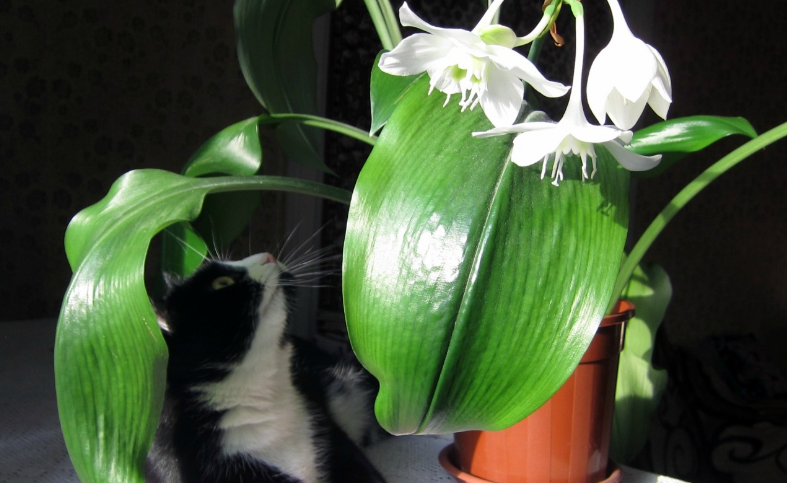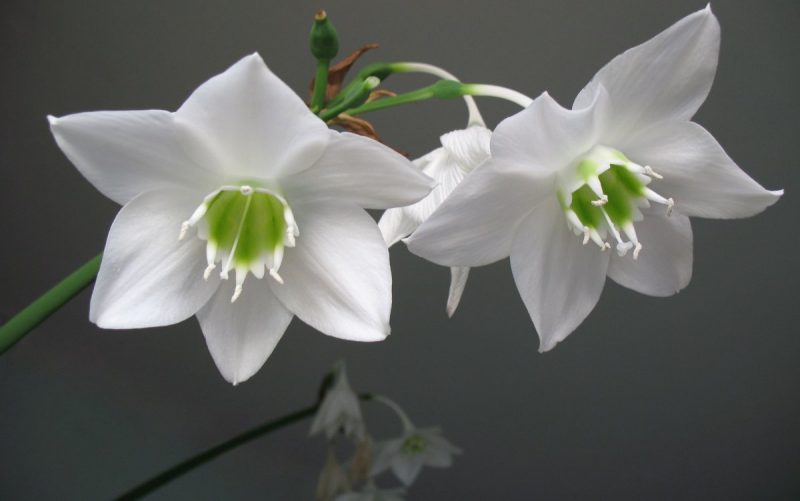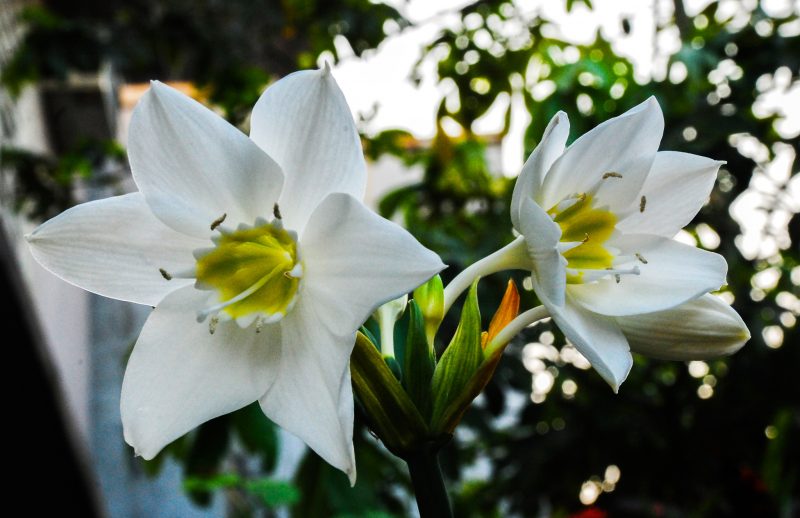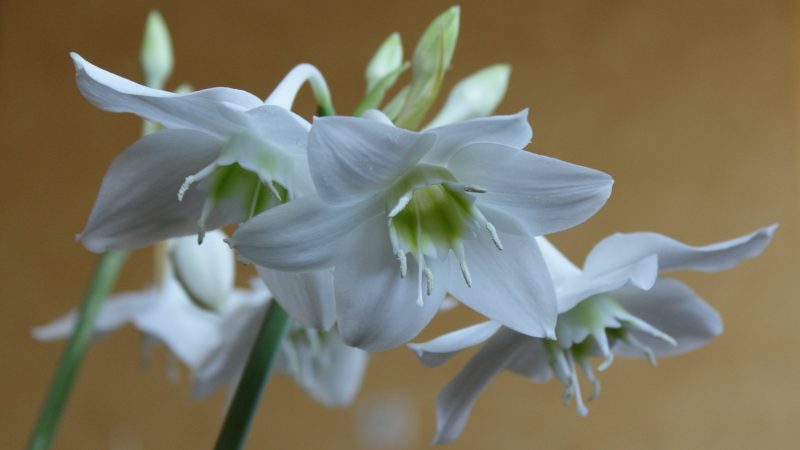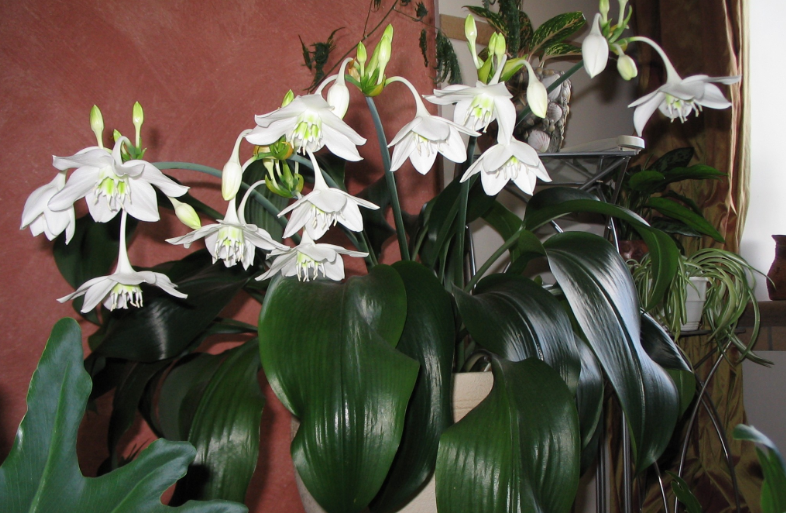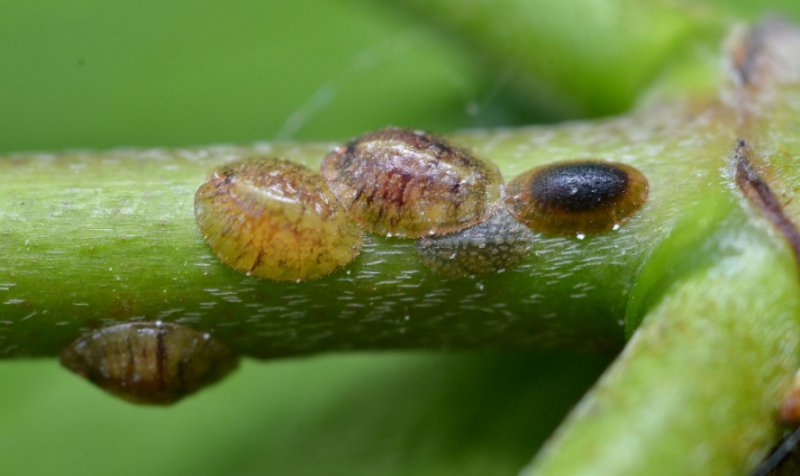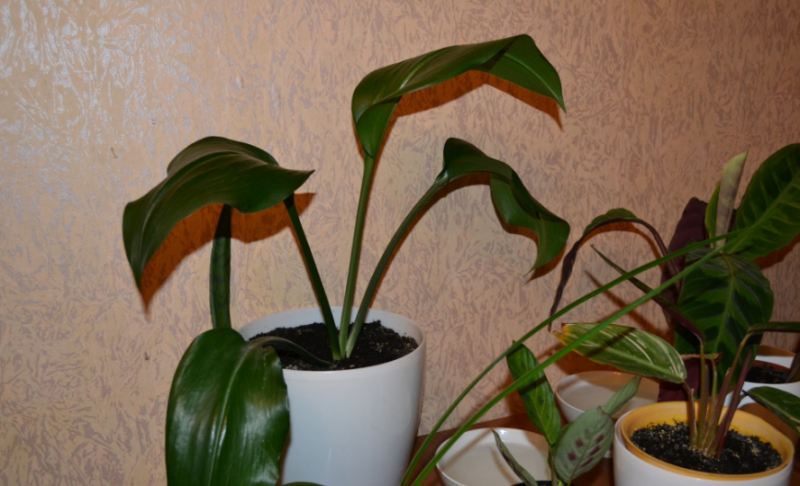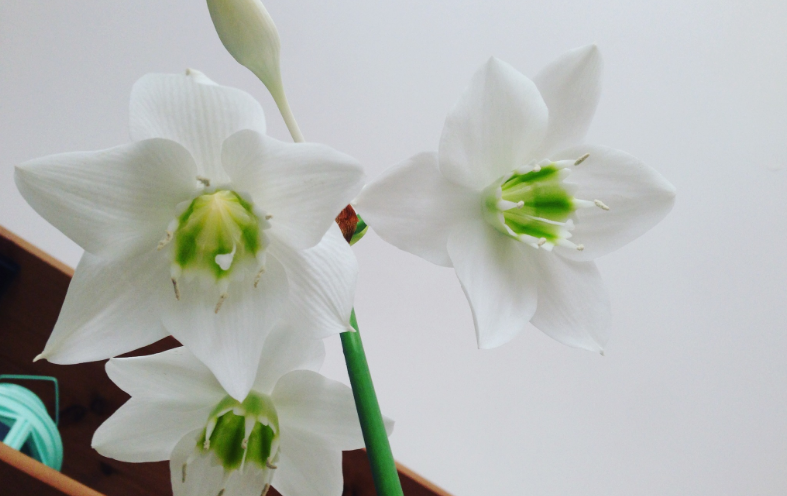Seeing a plant with snow-white inflorescences and succulent greens, many "catch the fire" with the idea to decorate their home with it. However, before you get a representative of the Amaryllis family, growing in the natural environment in the tropics, you need to get acquainted with the nuances of caring for eucharis at home.
Material Content:
What experienced gardeners say about eucharis
According to people who have long been engaged in growing indoor flowers of various agroclimatic zones, eucharis is unpretentious. Everyone can grow it without difficulty. The culture is undemanding to the soil and perfectly develops at ordinary room temperatures.
It is interesting that eucharis is a self-contained flower: due to its high decorativeness and strong energy, it will feel great in loneliness.
Moreover, the places for its placement can be varied, for example, a wall cabinet in the kitchen, where the air humidity indicator is akin to a similar value in the natural environment of the plant.
Variety of species and varieties
The eucharis flower has another name - "Amazonian Lily." They owe their culture to a natural habitat that extends from Guatemala to Bolivia.
The genus unites about 20 species, among which the following should be distinguished:
- Large-flowered eucharis is a typical variety represented by bulbous plants with wide lanceolate leaves and long peduncles, on which inflorescences develop, consisting of 3 to 4 snow-white flowers with an exquisite aroma. Flowering can take place in three stages: end of spring, end of summer and winter. I got a flower on the windowsills of the Colombian Andes.
- White eucharis is a plant with elliptical leaves, the length of which can reach 40 cm and a width of 15 cm. In March, brown peduncles are crowned with white flowers collected in umbrella inflorescences.
- Eucharis Masters. It is similar to the previous view, but the oval leaves are even shorter (about 25 cm). On the arrows formed no more than two inflorescences in the shape of an umbrella. Leaves have rather short petioles.
- Eucharis is gearless. The species is represented by plants, the aerial part of which consists of triangular leaves up to 25 cm long and tall arrows with umbrella inflorescences of 6 flowers.
- Eucharis Sandera. Cultivation of representatives of this species is carried out on an industrial scale. In February - April, white flowers with a yellowish crown crown are presented at flower markets.
It is interesting:care and cultivation of the Ahimenes
All the nuances of flower care at home
Despite the fact that experienced flower growers consider eucharis to be a fairly simple flower for growing indoors, so that it retains its decorativeness and often pleases with flowering, it is necessary to take a responsible approach to meeting the care requirements.
Soil suitable for eucharis
Eucharis is not picky about the soil, but will be grateful for the composite soil mixture, which includes:
- sheet earth;
- soddy soil;
- peat;
- sand;
- rotted manure.
All parts of the substrate are taken in equal proportions.
Temperature mode, degree of illumination
Eucharis needs a large space. The rest of the flower is quite unpretentious. It grows well in relative shade, for example, on the windowsill of the north window. The main thing is to protect the culture from the bright rays of the midday sun, which can burn the shoots.
The optimum temperature range is 18 - 20 ° C. Moreover, in winter, the flower does not need to create colder conditions. The main thing is that he should be far from drafts and not subject to temperature extremes.
Watering the plant and humidity
A plant that grows in Central or South America in the lower tier of the jungle needs high humidity and regular, plentiful watering. The latter during the growing season is carried out with standing water at room temperature twice a week. Over time, closer to the state of rest, the volume and frequency of humidification are reduced.
Spray the plant daily. Especially acute in good moisture the flower needs in the winter, when it is located near heating appliances that dry the air.
In order not to provoke the development of the fungus on the petals, it is not recommended to carry out such manipulations during budding and flowering. It is also recommended to wipe the leaf plates with a damp sponge, which makes breathing eucharis more free. If there is no time for spraying, then you can pour small pebbles into the pan and moisten it.
On a note! Any water procedures should be carried out with warm water.
Tips for feeding and fertilizing a flower
Feeding is recommended only during active vegetation, when the soil is enriched twice a month. At the same time, complex mineral fertilizers with a low nitrogen content are introduced to more stimulate abundant flowering. After awakening, you can feed eucharis with organic compounds to activate flower growth.
How to transplant eucharis
It is recommended to transplant the plant every 3 to 4 years before the completion of the stagnation stage. In this case, you should take a pot of a larger diameter, but of a similar depth.
The procedure:
- Drainage is poured into the tank evenly.
- Next, the bulbs are placed together with a nutritious loose substrate.
- The soil mixture is compacted and watered with a small amount of warm water.
During the transplant, it is not recommended to separate the children, since flowering will be sparse and short-lived.
Recommendations for care after flowering
Since eucharis does not have a pronounced dormant state, some gardeners make a mistake by not letting the flower rest.
After flowering is completed, flower stalks are removed, watering is reduced, and feeding is not carried out. It is possible to resume moistening and enrichment of the soil with agrochemicals only after the appearance of new offspring, indicating the awakening of the tropical representative.
Breeding methods
Reproduction is carried out both vegetatively and by seed. But the latter method is too time-consuming and unproductive, since varietal properties are not transmitted to new specimens.
The most effective technique is dividing the bush.
Wherein:
- for division, an adult bush is selected, which is removed from the soil;
- the rhizome is divided into dividers so that each has at least 4 bulbs, otherwise the new plant will not bloom;
- bulbs are planted in a substrate for adult plants.
How to deal with diseases and pests
Euharis, if the care measures are not followed, is attacked by such harmful insects as thrips, scale insects and spider mites. It is worth fighting pests with the help of insecticides.
With excessive moisture in the soil and air, the development of gray rot is noted. In case of manifestation of the disease, the plant is transplanted into a fresh substrate, while all affected aboveground and underground parts are cut off. The remaining healthy tissue must be sprayed with fungicide, which eliminates the possibility of reinfection.
What mistakes do flower growers make when growing eucharis?
Inexperienced flower growers may encounter certain difficulties. The two most common are discussed below.
How to Avoid Flowering Problems
It is interesting why eucharis does not bloom if its flowering state can be observed two to three times a year with proper care.
Main reasons:
- one bulb was planted;
- drafts;
- temperature changes.
The best solution to the problem is to shake the flower: create conditions for it to rest, and after a couple of months, the representative of the tropics will begin to grow with new forces.
Dying and yellowing of leaves, how to deal with it
If yellowing is observed only on a pair of leaf blades, then this is a natural process. But if the leaves on the whole plant turn yellow and die, then the conditions of detention should be reviewed. Most likely, irrigation or temperature conditions were violated, which could become the impetus for the development of fungal diseases.
If there are no visible foci of disease on the shoots, then you should extract the plant - perhaps the root was struck by gray rot. In the early stages, a common transplant into a fresh substrate will help the flower.
National signs and beliefs
Various indoor plants and superstitions are associated with many houseplants, especially those “coming” to our window sills from exotic countries. Often, lovers of "wonders" ask themselves whether it is possible to keep eucharis in the house.
So, it is recommended to place a tropical representative in the nursery in order to rekindle the craving for knowledge, to discover new abilities in the child.
For women, he acts as a talisman that protects her and those close to her from adversity. But in a small homeland, eucharis flowers are woven into brides as protection from evil glances. There is also a superstition that a withering flower suggests that he took on all the bad things, and maybe even took away the ailments of the household.
But you can not believe in signs. But you should remember the real benefits of the plant, which saturates the air with oxygen and absorbs harmful substances.If we consider the flower from the side of Feng Shui philosophy, it turns out that this is an energy generator that can suppress other indoor crops. Because of this, it is recommended to keep eucharis apart.
The Amazonian lily, also known as eucharis, is an unpretentious flower that even creates a tropical corner of bright colors and wonderful aromas even in a city apartment.


